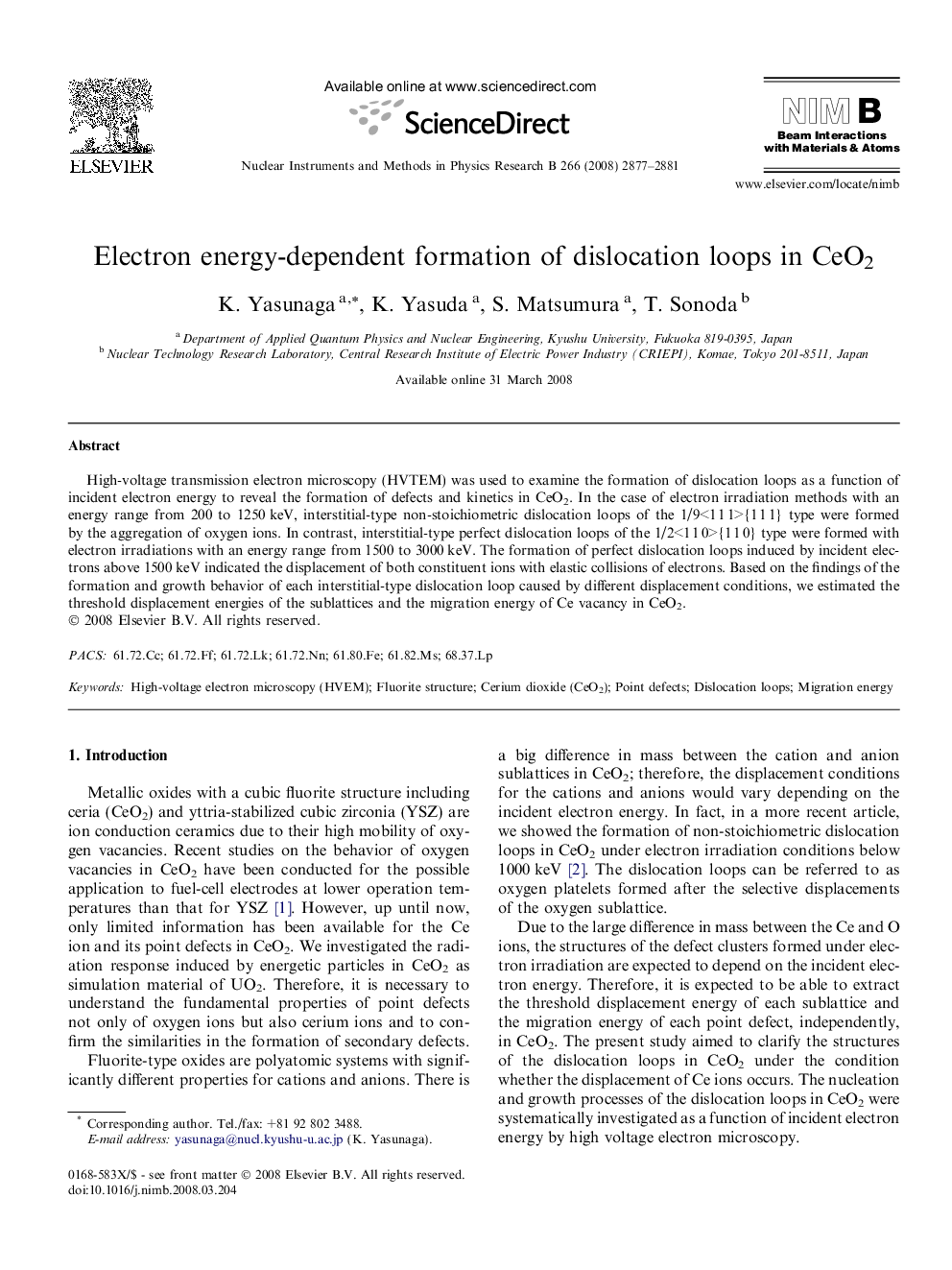| Article ID | Journal | Published Year | Pages | File Type |
|---|---|---|---|---|
| 1686033 | Nuclear Instruments and Methods in Physics Research Section B: Beam Interactions with Materials and Atoms | 2008 | 5 Pages |
High-voltage transmission electron microscopy (HVTEM) was used to examine the formation of dislocation loops as a function of incident electron energy to reveal the formation of defects and kinetics in CeO2. In the case of electron irradiation methods with an energy range from 200 to 1250 keV, interstitial-type non-stoichiometric dislocation loops of the 1/9<1 1 1>{1 1 1} type were formed by the aggregation of oxygen ions. In contrast, interstitial-type perfect dislocation loops of the 1/2<1 1 0>{1 1 0} type were formed with electron irradiations with an energy range from 1500 to 3000 keV. The formation of perfect dislocation loops induced by incident electrons above 1500 keV indicated the displacement of both constituent ions with elastic collisions of electrons. Based on the findings of the formation and growth behavior of each interstitial-type dislocation loop caused by different displacement conditions, we estimated the threshold displacement energies of the sublattices and the migration energy of Ce vacancy in CeO2.
